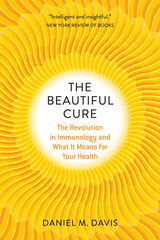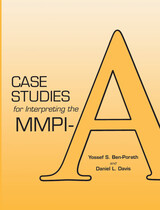4 books by Davis, Daniel

Across the Continent
The Union Pacific Photographs of Andrew Joseph Russell
Daniel Davis
University of Utah Press, 2018
Copublished with the Utah State Historical Society. Affiliated with the Utah Division of State History, Utah Department of Heritage & Arts
Andrew J. Russell is primarily known as the man who photographed the famous “East and West Shaking Hands” image of the Golden Spike ceremony on May 10, 1869. He also took nearly one thousand other images that document almost every aspect of the construction of the Union Pacific Railroad. Across the Continent is the most detailed study to date of the life and work of an often-overlooked but prolific artist who contributed immensely not only to documentation of the railroad but also to the nation’s visualization of the American West and, earlier, the Civil War.
The central focus in the book is on the large body of work Russell produced primarily to satisfy the needs of the Union Pacific. Daniel Davis posits that this set of Russell’s photos is best understood not through one or a handful of individual images, but as a photographic archive. Taken as a whole, that archive shows that Russell intended for viewers never to forget who built the Union Pacific. His images celebrate working people—masons working on bridge foundations, freighters and their wagons, surveyors with their transits, engine crews posed on their engines, as well as tracklayers, laborers, cooks, machinists, carpenters, graders, teamsters, and clerks pushing paper.
Russell contributed to a golden age of Western photography that visually introduced the American West to the nation, changing its public image from that of a Great American Desert to a place of apparently unlimited economic potential.
[more]

The Beautiful Cure
The Revolution in Immunology and What It Means for Your Health
Daniel M. Davis
University of Chicago Press, 2018
“Visceral.”—Wall Street Journal “Illuminating.”—Publishers Weekly “Heroic.”—Science
The immune system holds the key to human health. In The Beautiful Cure, leading immunologist Daniel M. Davis describes how the scientific quest to understand how the immune system works—and how it is affected by stress, sleep, age, and our state of mind—is now unlocking a revolutionary new approach to medicine and well-being.
The body’s ability to fight disease and heal itself is one of the great mysteries and marvels of nature. But in recent years, painstaking research has resulted in major advances in our grasp of this breathtakingly beautiful inner world: a vast and intricate network of specialist cells, regulatory proteins, and dedicated genes that are continually protecting our bodies. Far more powerful than any medicine ever invented, the immune system plays a crucial role in our daily lives. We have found ways to harness these natural defenses to create breakthrough drugs and so-called immunotherapies that help us fight cancer, diabetes, arthritis, and many age-related diseases, and we are starting to understand whether activities such as mindfulness might play a role in enhancing our physical resilience.
Written by a researcher at the forefront of this adventure, The Beautiful Cure tells a dramatic story of scientific detective work and discovery, of puzzles solved and mysteries that linger, of lives sacrificed and saved. With expertise and eloquence, Davis introduces us to this revelatory new understanding of the human body and what it takes to be healthy.
The immune system holds the key to human health. In The Beautiful Cure, leading immunologist Daniel M. Davis describes how the scientific quest to understand how the immune system works—and how it is affected by stress, sleep, age, and our state of mind—is now unlocking a revolutionary new approach to medicine and well-being.
The body’s ability to fight disease and heal itself is one of the great mysteries and marvels of nature. But in recent years, painstaking research has resulted in major advances in our grasp of this breathtakingly beautiful inner world: a vast and intricate network of specialist cells, regulatory proteins, and dedicated genes that are continually protecting our bodies. Far more powerful than any medicine ever invented, the immune system plays a crucial role in our daily lives. We have found ways to harness these natural defenses to create breakthrough drugs and so-called immunotherapies that help us fight cancer, diabetes, arthritis, and many age-related diseases, and we are starting to understand whether activities such as mindfulness might play a role in enhancing our physical resilience.
Written by a researcher at the forefront of this adventure, The Beautiful Cure tells a dramatic story of scientific detective work and discovery, of puzzles solved and mysteries that linger, of lives sacrificed and saved. With expertise and eloquence, Davis introduces us to this revelatory new understanding of the human body and what it takes to be healthy.
[more]

Case Studies for Interpreting the MMPI-A
Yossef S. Ben-Porath
University of Minnesota Press, 1996
An instrumental resource for professionals and students working with adolescents.
A landmark for MMPI instruments, this volume will serve as a vital contribution to the expanding base of successful MMPI-A applications. The authors' comprehensive approach to each of the sixteen clinically diverse cases constitutes an intrepretive model providing detailed information on the background of each case, profile validity, current level of adjustment, symptoms and traits, diagnostic and treatment recommendations, and outcome. Particular emphasis is placed on the new adolescent-specific scales developed to assess family and school problems, low self-esteem, and substance abuse.
Including background information on the development of the MMPI-A, the book is a useful resource for those new to the MMPI-A as well as an essential reference for those who have experience in MMPI interpretation with adolescents.
Yossef S. Ben-Porath is associate professor of psychology at Kent State University. Instrumental in the research on and development of the MMPI-A, he has coauthored numerous books on the MMPI-2 and MMPI-A.
Daniel L. Davis is an expert in the area of juvenile delinquency and has had an active career in the treatment and rehabilitation of youth in various programs. He currently works at the Ohio Department of Rehabilitation and Corrections.
[more]

Turning Points of the American Civil War
Edited by Chris Mackowski and Kristopher D. White, with a foreword by Thomas A. Desjardin
Southern Illinois University Press, 2017
Contributors to this collection, public historians with experience at Civil War battle sites, examine key shifts in the Civil War and the context surrounding them to show that many chains of events caused the course of the war to change: the Federal defeats at First Bull Run and Ball’s Bluff, the wounding of Joseph Johnston at Seven Pines and the Confederate victory at Chancellorsville, the issuance of the Emancipation Proclamation, the Federal victory at Vicksburg, Grant’s decision to move on to Richmond rather than retreat from the Wilderness, the naming of John B. Hood as commander of the Army of Tennessee, and the 1864 presidential election. In their conclusion, the editors suggest that the assassination of Abraham Lincoln might have been the war’s final turning point.
[more]
READERS
Browse our collection.
PUBLISHERS
See BiblioVault's publisher services.
STUDENT SERVICES
Files for college accessibility offices.
UChicago Accessibility Resources
home | accessibility | search | about | contact us
BiblioVault ® 2001 - 2024
The University of Chicago Press









